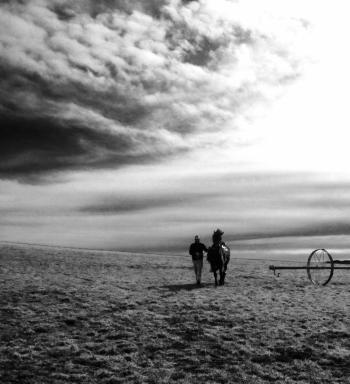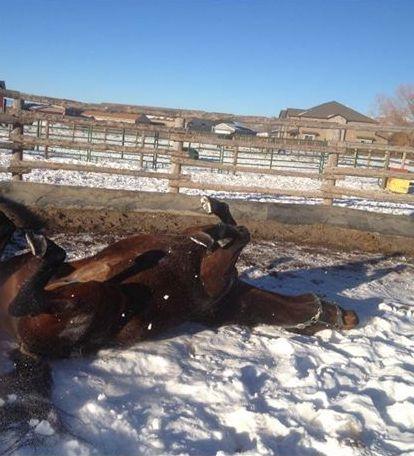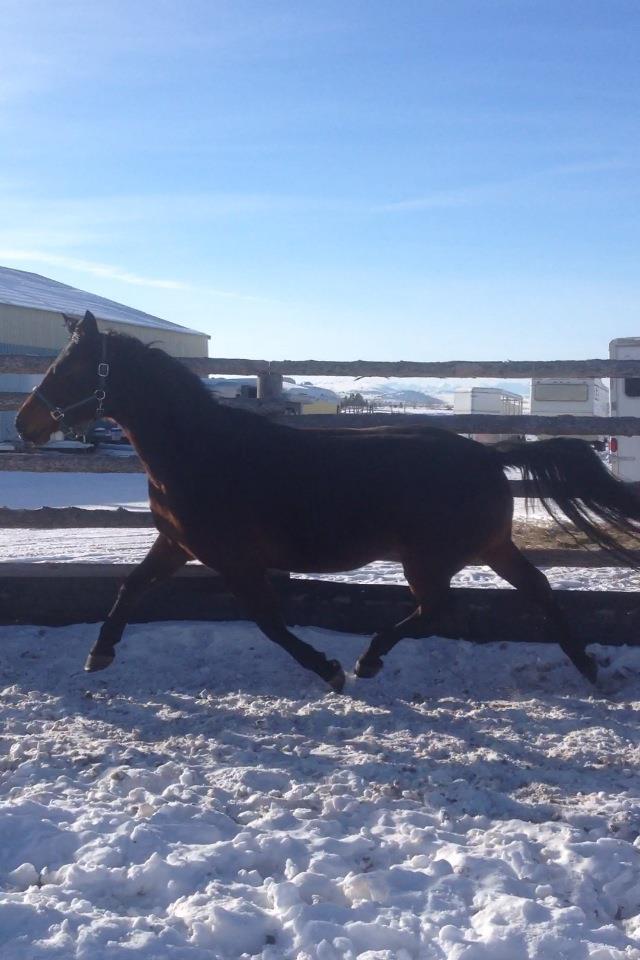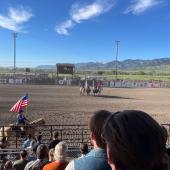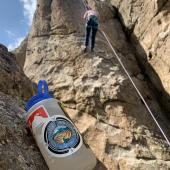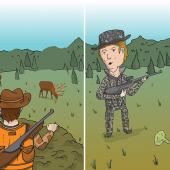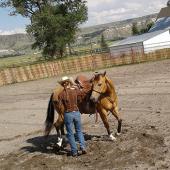Riding Right
Winter riding tips.
From the back of my horse, Montana's lanscape is an invitation. It beckons us to come play, to leave hoofprints, and drink in a cocktail of sunshine and wind. There's nothing I love more than the feel of a strong horse beneath me and the sight of the big sky above. I know there are other riders in this valley as woefully addicted to horsepower as I, but in a state that remains frozen six months a year, building the energy to keep a consistent schooling schedule throughout such a long winter can be difficult. Without access to an indoor arena, night falls quickly, making outdoor riding more dangerous. Storms come out of nowhere, and while most of us know to go out with a buddy or to alert someone where you're riding and when you'll be back, there are other things to consider when working your horse in winter. Here are a few things to keep in mind.
Down to Dress: Clothing
Nothing makes a day outside worse than being ill-prepared. It’s as important for you to dress appropriately for the cold as it is for your horse.
For You. Like any other winter sport, dress in layers. (Check out our gear reviews for the essentials.) Dismounting on cold ground with numb toes sends a shock up your whole body, a feeling every rider knows and hates. Investing in winter riding boots like the Mountain Horse Ice Rider, designed to keep feet and calves warmer and drier than paddock boots, is money well-spent. To protect your eyes, ride with a pair of sun glasses or ski googles and in the event of a fall, keep an extra layer or change of clothes on hand.
For Your Horse. Luckily, horses are self-sufficient and can generally keep warm if they're used to a cold climate. But there are things we can do to make them more comfortable. Before bridling your horse, warm the bit in your bare hands until the metal is no longer cold to the touch (or use a bit warmer). Would you want a cold hunk of metal against your tongue? If you’ve blanketed your horse all winter in a top-of-the-line, 1,200-denier, 350-gram Weatherbeta and their coat looks as thin as it does in summertime, they may need some extra protection, like a quarter sheet, to keep muscles warm while on the trail. Desensitize your horse to the sheet before you mount so he won’t spook. On the other hand, know if your horse has a full and fluffy winter coat, she's likely to sweat more when worked. If you want to ride consistently in the winter, body-clipping your horse is a good option so your horse doesn’t sweat heavily, but this also sacrifices their coat and natural protection from the elements and requires extra blanketing.
Know the Snow: Footing
What’s under that foot of fresh pow? Ice and rocks that can cause tremendous (and expensive) injury to you and your horse. A fall on ice can mean anything from bruised muscles to broken legs, so it’s essential to know where you’re riding and what the conditions are before you mount. Luckily, our snow is light and dry—much better for winter riding than wet snow that clumps onto the horse’s lower legs—but we still have to deal with ice. A good rule of thumb: if you can’t walk on it comfortably, don’t ride on it.
Use common sense and don't take unecessary risks. Stay away from holes, large branches, downed fences, or other potential hazards on the trail. Barefoot horses may have as much difficulty on ice in the winter as a shod horse, and are more susceptible to cracked hooves during freeze-thaw cycles. Talk to your farrier about winter-shoeing options, like drive-in calks or screw-in studs for better traction and snow pads to avoid snowball build-up on the hoof.
Adjust the Load: Schooling
Similar to humans, horses work harder and burn more energy moving through snow. Adjust ride times to compensate for the condition of your horse. If you haven't been riding consistently, your horse will be like your buddy who binge-watches Netflix on a pow day—out of shape—and will probably need a longer warm-up and cool-down.
Build the ride up gradually, plan lots of walking time, and be careful not to push too hard, too soon to avoid a profusely sweaty horse. Be aware of windchill and if possible, start your ride against the wind so it’s at your back on the ride home, when you’re both likely to be colder.
Sweat Less: Cooling Down
After a ride, proper cool-down is vital to your horse's health. A wet horse is a chilled horse, so invest in a cooler—a breathable fleece sheet designed to wick sweat from the horse's coat while keeping him warm. I make it a habit to dismount, untack, throw the cooler on, and walkout on foot until the horse is dry to the touch. This helps me and my feet warm up and dries the horse, while both our heart rates stabilize. Be sure that your horse is completely dry before putting a turnout blanket back on and putting him away for the night.



